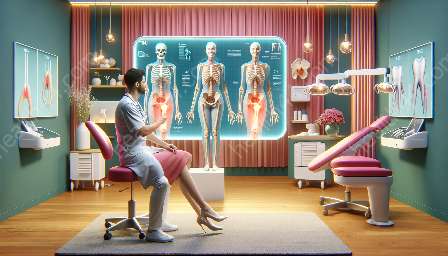Posture plays a crucial role in the development and management of temporomandibular joint (TMJ) disorder. Understanding the connection between posture and TMJ disorder can help to alleviate pain and improve overall well-being. In this comprehensive topic cluster, we will explore the relationship between posture and TMJ disorder, effective pain management techniques, and the implications for individuals suffering from TMJ disorder.
Understanding Posture and TMJ Disorder
Posture refers to the alignment and positioning of the body, particularly the spine, while standing, sitting, or lying down. Poor posture can result in misalignment of the spine, leading to muscle tension and imbalance. This misalignment can extend to the jaw, potentially impacting the temporomandibular joint.
Individuals with poor posture may experience increased tension in the muscles surrounding the TMJ, leading to stiffness, pain, and dysfunction. Furthermore, poor posture can contribute to uneven pressure on the temporomandibular joint, potentially exacerbating symptoms of TMJ disorder.
Effects of Poor Posture on TMJ Disorder
Poor posture can manifest in a variety of ways, including forward head posture, rounded shoulders, and an arched lower back. These postural deviations can impact the alignment of the spine, resulting in increased strain on the muscles and joints of the neck, shoulders, and jaw.
Forward head posture, for example, can place excessive strain on the muscles and ligaments of the neck and jaw, potentially contributing to TMJ disorder. Additionally, rounded shoulders can alter the alignment of the upper body, affecting the positioning of the head and neck, which may influence the function of the temporomandibular joint.
Corrective Measures and Postural Rehabilitation
Addressing poor posture is essential in the management of TMJ disorder. Corrective measures, such as postural exercises, ergonomic adjustments, and awareness of body positioning, can significantly impact the symptoms associated with TMJ disorder.
Postural rehabilitation focuses on improving alignment, reducing muscle tension, and restoring balance within the musculoskeletal system. Individuals with TMJ disorder can benefit from specific exercises designed to strengthen the muscles that support proper posture, thereby alleviating strain on the temporomandibular joint.
Integration of Pain Management Techniques
In conjunction with posture correction, pain management techniques play a crucial role in the comprehensive treatment of TMJ disorder. Patients may experience various forms of discomfort, including jaw pain, headaches, and muscle tenderness, all of which can be addressed through targeted pain management strategies.
Common pain management techniques for temporomandibular joint disorder include:
- Heat and cold therapy
- Massage therapy
- Physical therapy
- Stress management techniques
- Oral appliances and splints
- Medications for pain and inflammation
Impact of Posture on Pain Management and TMJ
Improving posture can positively impact the effectiveness of pain management techniques for TMJ disorder. By addressing postural imbalances, individuals may experience reduced muscle tension, improved joint alignment, and enhanced response to pain management interventions.
Furthermore, proper posture can promote overall musculoskeletal health, potentially reducing the frequency and severity of TMJ-related symptoms. Integrating posture-focused interventions with comprehensive pain management techniques can lead to enhanced outcomes for individuals suffering from TMJ disorder.
Linking Posture and Temporomandibular Joint Disorder
The intricate relationship between posture and temporomandibular joint disorder underscores the importance of a holistic approach to treatment. Recognizing the influence of posture on the development and progression of TMJ disorder can guide healthcare professionals in providing tailored interventions to address the root causes of this condition.
Through a multifaceted approach that encompasses posture correction, pain management, and patient education, individuals with TMJ disorder can achieve improved function, reduced pain, and enhanced quality of life.
Conclusion
Posture significantly impacts the onset, severity, and management of temporomandibular joint disorder. By understanding the relationship between posture and TMJ disorder, individuals can adopt proactive measures to improve posture, alleviate pain, and enhance overall well-being. Through the integration of effective pain management techniques and posture-focused interventions, healthcare professionals can empower individuals to effectively manage TMJ disorder and improve their quality of life.


